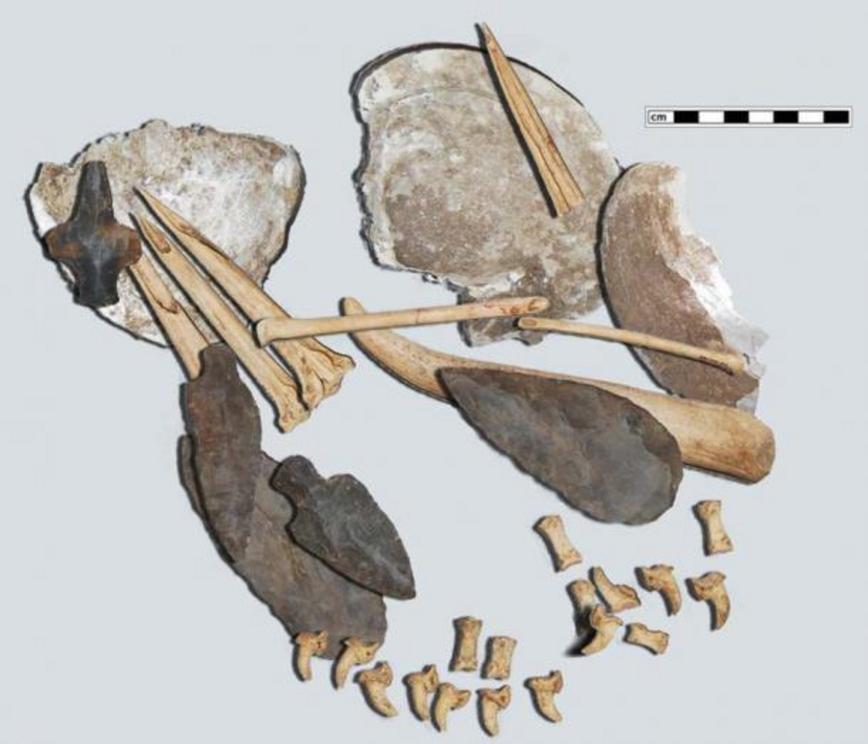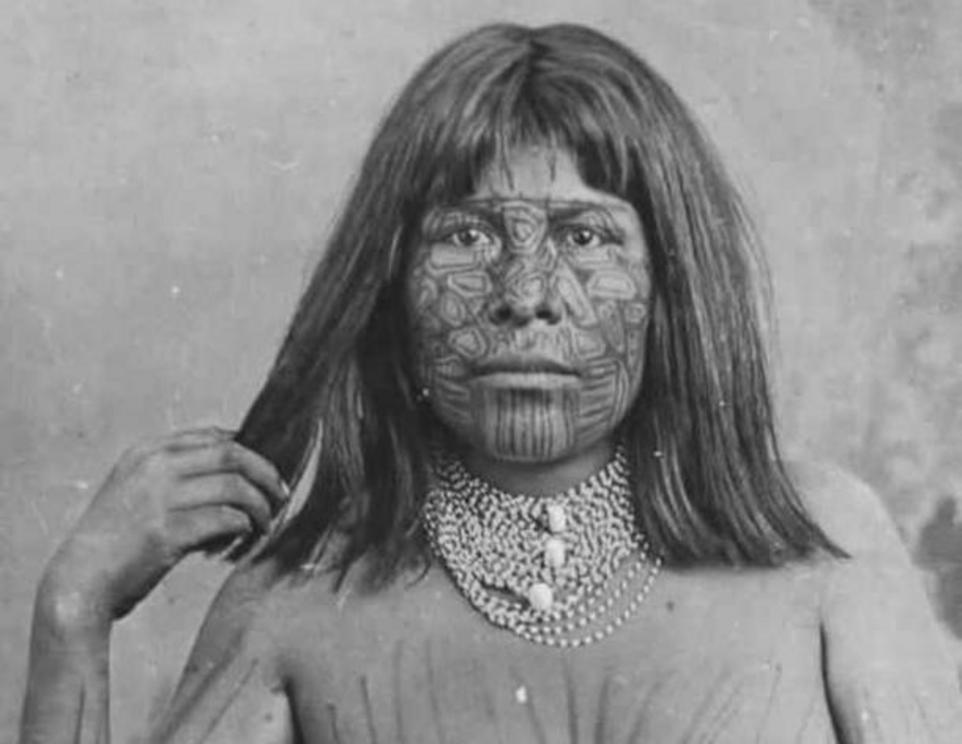Pointed turkey bones are oldest Native American tattoo kit, says study
Top image: Two previously unearthed turkey leg bones with sharpened tips (top) are the oldest known tattoo tools according to the latest study on the Fernvale, Tennessee site artifacts. Two other turkey bones from the same site (bottom) may also have been used for tattooing but lack tips for analysis.
A group of researchers now think they’ve discovered and identified what might be the world’s oldest tattoo kit - a set of pointy, ink-stained needles that were carved out of wild turkey bones and then buried in a Native American grave from central Tennessee at least 3600 years ago. The Native American tattoo kit study was published in The Journal of Archaeological Science , which states that the earliest forms of tattooing began in North America.
Like all modern traditions that have acquired almost ubiquitous fame, the art of tattoo making is an ancient one. Since human skin is something that doesn’t survive the ravages of time, tattoos have been difficult to study archaeologically and decipher, but evidence of the tattoo tools used to make these remarkable ink paintings have lived to tell the tale. Remember, the first tattoo machine was only patented by Samuel O’Reilly, at the end of the 19 th century in the USA.
 The tattoo kit unearthed at Fernvale, Tennessee, USA. This is the oldest tattoo toolkit discovered to date.
The tattoo kit unearthed at Fernvale, Tennessee, USA. This is the oldest tattoo toolkit discovered to date.
The Tennessee Tattoo Kit: Analyzed, Dated, and Confirmed
The word tattoo comes from the Samoan word “tatau,” which means “to mark” or “to strike,” but now we know that the very first tattoos were likely made in the Americas.
The latest study on North American tattoo tools reveals that Native Americans used turkey leg bones and ochre pigments to make tattoos sometime between 5,520 and 3,620 years ago!
Led by archaeologist Aaron Deter-Wolf of the Tennessee Division of Archaeology in Nashville and his colleagues, this study pushes back the earliest understood date of tattooing in eastern North America by more than a millennia . Prior to the latest tattoo kit study, it was Ötzi the Iceman who held the record for the oldest tattoos, which were dated to about 3300 – 3100 BC. This finding may challenge that record.
The Tennessee research team conducted “traditional artifact classification schemes” by analyzing bone tools from the Southeastern United States. In addition to basic morphological classification, they also undertook studies of traditional animal remains from the Fernvale site (west of Nashville) tattoo kit artifacts. The assessment showed that the occupants of the site used sharpened turkey bone tools ( Meleagris gallopavo ) as implements for the tattooing process, and black and red ochre pigment for the tattoo colors.
The tattoo kit and other artifacts were discovered in 1985 during a bridge construction project but spent the next three decades in storage labelled simply as a “toolkit.”
"It was one of these situations where it went into a collection and nothing was done with it,” said Deter-Wolf. It was initially thought to be an indigenous medicine bundle acting as a portable shrine, but after teaming up with zooarchaeologist Tanya Peres from Florida State University, they found it to be a tattoo toolkit.
Deter-Wolf took his research into the practical arena by re-creating one of Ötzi’s tattoos on his left wrist by making 1,500 puncture marks with a bone tool and black ink. "At this point there's not another activity that we know of that would create that same pattern on bone tools," Deter-Wolf says.
 A photo of a Mohave Native American woman with tattoos from 1883 AD taken at Needles, California, USA.
A photo of a Mohave Native American woman with tattoos from 1883 AD taken at Needles, California, USA.
Tattoo Kits and Tattoos Have Been Found All Over the World
"By the arrival of the Europeans, virtually every Native American group in the Great Plains and the Eastern Woodlands practiced tattooing," Deter-Wolf told Mental Floss . "If it's something that widespread and that important, we suspect that it is very deeply rooted in Native American history."
Mummified preserved skin and ancient art shows that tattooing has been practiced since at least Neolithic times (10,000 – 4,500 years ago). There are also certain ancient tools that point to tattooing. Unfortunately, these skin and tool artifacts are from 49 sites scattered across the globe, including Ötzi the Iceman and his 61 body tattoos.
Tattooing was widely prevalent among the Austronesians in the Indo-Pacific region , perhaps as a form of expressing conquest during headhunting rituals, and have been dated to about 1,450 BC. They made tattoo tools by combining wooden handles and mallets with animal bones, fish bones , teeth or the shells of turtles and oysters .
While there are scores of sites across the globe pointing to a prevalence of tattooing among various cultures and subcultures, North America and its indigenous people have been well known as one of the oldest tattoo cultures. Previous research published by the same author and research for the current study by Aaron Deter-Wolf focused on the metaphysical understanding of tattooing. According to Aaron Deter-Wolf, tattoos aren’t just simple skin markings but are a form of “communication” that reflects the desires of the indigenous peoples to culturally connect with the ways of knowing and seeing the world: a connection to family, society, or a particular site.
Today, tattoos have acquired a strong hold over the public imagination and are used to commemorate lovers, important days, quotes, life, and death. Tattoos were popularized by music artists through the ‘80s and ‘90s but are also used by survivors of breast cancer, sexual assault and acid attacks to signify victory over a deeply emotional and traumatic battle.

